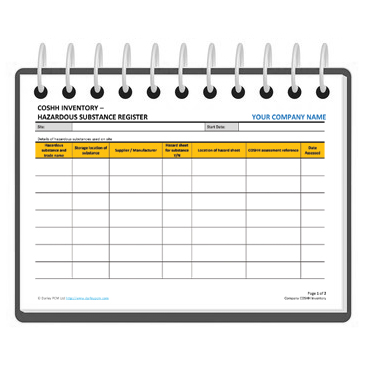Working with flammable and combustible liquids involves a multitude of potential hazards for both employees and the environment. When handling or storing flammables, it’s vital to be aware of these hazards to mitigate any potential risks. As well as being risk-aware, organisations in the UK should ensure they are fully compliant with COSHH regulations.
Hazards associated with flammable liquids:
- Risk of explosion
Flammable liquids such as liquefied petroleum gas (LPG) are usually stored in pressurised cylinders. As robust and durable as these may be, they are vulnerable to heat, collision and corrosion. They must be stored in a designated, clearly marked and temperature-controlled area where there is no exposure to direct heat, sparks, or naked flames. Safe, compliant flammables storage is imperative to reduce risk of explosion or fire.
Cylinders should be arranged away from traffic sources with clear gangways in between batches. Store only the minimum number required and treat any cylinder as full.
- Vapour inhalation dangers
The vapours released will not only ignite easily – they can be harmful if inhaled or allowed to contact the skin. For that reason, it is common to store flammable chemicals in covered outdoor units where the vapours will dissipate. Access to flammable storage units must be strictly controlled and all those authorised to enter should wear PPE clothing including respiratory protection to avoid inhaling any vapours.
- Incompatible chemicals
Flammable or combustible liquids can become dangerously volatile if they come into contact with other substances. For this reason, each container must be clearly marked to identify its contents, and accompanied with a list of its intrinsic hazards. Grouping chemicals in separate areas according to type and keeping storage to the minimum volume necessary is vital for mitigating risk.
Learn more: Read our blog about incompatible chemicals, outlining 10 sets of chemicals that should never be stored together.
- Container damage through corrosion
Where cylinders or containers are stored outside, water contact may lead to corrosion. The area should be covered with sufficient drainage to eliminate ground water, and containers should be checked regularly to identify rust or signs of leakage.
Compliancy with COSHH regulations
Safe flammables storage and handling in the UK is regulated by the Control of Substances Hazardous to Health 2002 (COSHH). This was implemented to reduce workers’ exposure to hazardous substances and applies to any business where employees are at risk from handling flammable substances.

By preparing your workplace for compliance with COSHH regulations, and following flammable storage best practices, you can eliminate the significant risks involved of working with flammables, and ensure compliancy. For a detailed overview of what the law requires, you can visit the official HSE website.
Some of the elements of COSHH involve:
- Workplace COSHH Assessment
Organisations must carry out a COSHH Assessment to evaluate risks, and ensure that Safety Data Sheets are present and available for each flammable substance stored. These should be provided by the chemical supplier by law.
- Flammable Liquid Prevention & Control Measures
It is also your responsibility to implement control measures for the supervision and training of all workers handling flammable liquids, and control equipment for managing ventilation and extraction as well as spillage capture and decontamination. Records must be kept of all examinations, tests and repairs.
- Permit to Work
Under the ‘permit to work’ system, there must be a documented procedure for authorising those who carry out work with hazardous chemicals. It sets out who is authorised to work, how it will be done, the procedures to be followed, and the timeframe to be observed.
By knowing the risks in advance and complying with COSHH regulations, employers can be assured they are mitigating potential risks and staying compliant with UK law.
If you would like to learn more about how to handle flammable liquids, you can read our blog: How to Ensure Safe Handling & Storage of Flammable Liquids